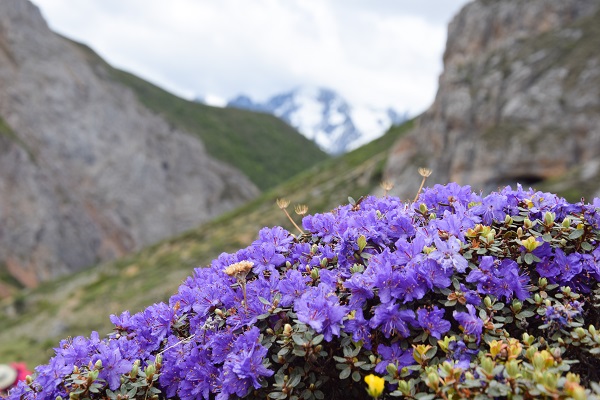BEIJING, Aug. 4 (Xinhua) -- Researchers have discovered that the Hengduan Mountains in southwest China were the major source for the alpine flora of the Tibet-Himalaya-Hengduan region, according to a recently published research article in the journal Science.
Alpine floras develop when mountains are uplifted above the height where trees can survive, leading to the evolution of new species adapted to the stressful environment.
Similar alpine ecosystems are found on high mountains worldwide, including the Alps, the Andes and the Rocky Mountains, but the region that includes the Himalayas, Qinghai-Tibet Plateau and Hengduan Mountains has the richest alpine flora, said the researchers from the Xishuangbanna Tropical Botanical Garden of the Chinese Academy of Sciences.
Understanding how plants have evolved to cope with cold, drought and ultraviolet radiation may help predict how climate change will influence the alpine flora.
The researchers selected 3,798 species of plants in 18 groups of flowering plants that diversified in the Hengduan Mountains and adjacent regions. They built a new biogeographic model to calculate the evolution and biological migration rate of the alpine flora.
The alpine flora of the Hengduan Mountains has continuously existed far longer than any other alpine flora on Earth and illustrates how modern biotas have been shaped by past geological and climatic events, according to the article.

Rhododendron nivale subsp. boreale in Hengduan Mountains (Image by DING Wenna)

